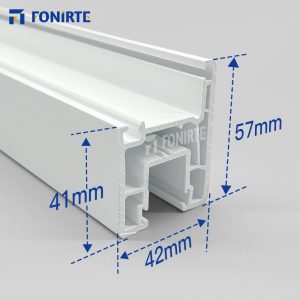
1. The Circular Economy Champion
Unlike composite materials that end up in landfills, UPVC’s 100% recyclability makes it a closed-loop superstar:
– Post-consumer recycling: Old frames are shredded and reprocessed into new profiles up to 10 times without property loss (verified by BRE Green Guide).
– Production waste: Off-cuts are immediately reused, slashing factory waste by 90% vs. aluminum extrusion.
Pro Tip: Leading manufacturers now embed QR code tracers in profiles to streamline recycling sorting.
2. Longevity = Less Waste
Lamination isn’t just about looks—it’s a durability multiplier:
– UV-resistant films prevent the yellowing and brittleness that doom standard UPVC in 5-8 years, extending service life to 25+ years.
– Abrasion-resistant surfaces eliminate the repainting cycles required for wood/metal (saving 200kg CO₂ per window over its lifespan).
3. Energy Savings That Stack Up
The sustainability benefits go beyond the material itself:
-Thermal efficiency: Multi-chamber designs with laminated insulation cores achieve U-values as low as 0.8, cutting building HVAC loads by 30%.
– Lightweight advantage: At 1/3 the weight of aluminum, transportation emissions plummet (one truck carries 2x more UPVC than aluminum frames).
4. Behind the Green Label
Don’t be fooled by imitators—true eco-friendly UPVC requires:
– Phthalate-free stabilizers: Replacing lead/Cd with Ca-Zn systems (compliant with REACH SVHC).
– Low-carbon lamination: Water-based adhesives and UV-cured coatings that slash VOC emissions by 95%.
Future Frontier:
– Bio-based films: Under development using cellulose nanocrystals to replace petroleum-based layers.
– Self-cleaning coatings: Photocatalytic TiO₂ layers that break down airborne pollutants.
Why This Matters
From Net-Zero buildings to LEED-certified skyscrapers, laminated UPVC proves sustainability doesn’t mean settling. It’s not just a greener choice—it’s a smarter, longer-lasting one.
(Ideal for: Eco-conscious developers, passive house projects, and renovations targeting EPC “A” ratings.)






